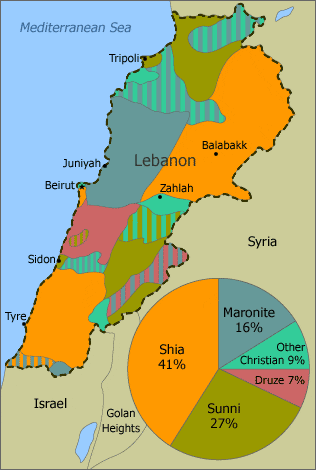Lebanon proclaimed its independence from France in 1941 and held general elections in 1943. Although French authorities were initially resistant to Lebanese sovereignty, exiling several prominent Lebanese politicians to the Castle of Rashayya (forty miles east of Sidon), Lebanon’s Muslim and Christian leaders united and, with international support, pressured France into releasing the prisoners on November 22, 1943 — henceforth known as Independence Day (French troops finally withdrew in 1946). Meanwhile, a fragile balance of power was forged via an unwritten agreement known as the National Pact. The pact states that Lebanon is an independent Arab nation with ties to the West that also cooperates with other Arab states, and that public offices should be distributed equally between the country’s recognized religious sects. Specifically, the president of the republic should be a Maronite Christian, the prime minister a Sunni Muslim, and the speaker of the Chamber of Deputies a Shia Muslim. Overall, Christians held six offices to the five held by Muslims.
Between 1943 and 1976, Lebanon was controlled by various networks of prominent families within each religious sect. For instance, the Shihabs of the Maronites; the Karamis of the Sunnis; the Asads of the Shias; and the Jumblatts of the Druze (a small, Arabic-speaking religious group that grew out of Islam in the 10th century, although, today, the Druze are not considered Muslim by most Muslims). In 1958, tension between pan-Arab and pro-Western interests erupted into civil war. U.S. troops were dispatched in response to a request by the Lebanese government, which claimed Syria was assisting rebel fighters (and that the Soviet Union was assisting Syria). U.S. forces, however, played a symbolic rather than active role in the conflict — and did not actively participate in battle. By October, they had completely withdrawn and some 2,000-4,000 casualties had occurred, largely in the Muslim areas of Beirut and Tripoli. After the war, political compromise, a neutral foreign policy, and extensive infrastructure development led to a period of stability and prosperity during the 1960s in which Beirut became a regional center for finance and trade as well as a successful tourist attraction.
- Next: Civil War



